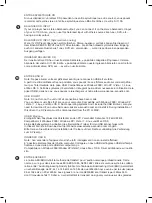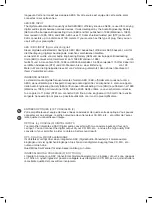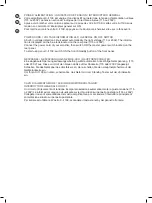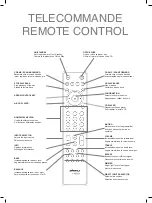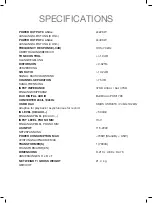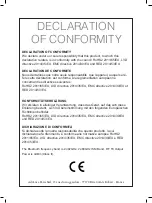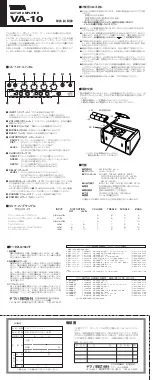
SPADE CONNECTORS
These should be slotted under the terminal’s screw bushing, which is then fully tightened.
Ensure the connector is tightly secured and there is no danger of bare metal from spade
connectors touching the back panel or another connector as this may cause damage.
BARE WIRES AND PIN CONNECTORS
Bare wires and pin connectors should be inserted into the hole in the shaft of the terminal.
Unscrew the speaker terminal’s plastic bushing until the hole in the screw shaft is revealed. Insert
the pin or bare cable end into the hole and secure the cable by tightening down the terminal’s
bushing.
BANANA CONNECTORS
You also can use banana connectors on the speakers terminal.
Avoid any danger of bare metal from the speaker cables touching the back panel or
another connector.
LAUTSPRECHERANSCHLÜSSE
Hinweis: Für ein unverfälschtes Klangerlebnis stellen Sie bitte einen verpolungsfreien
Lautsprecheranschluss sicher!
SPEAKERS A: Verwenden Sie Lautsprecher mit einer Impedanz von 4 Ohm oder größer. Verbinden
Sie den rechten Lautsprecher an den Klemmen «R +» und «R-». Verbinden Sie die Klemmen «L +»
und «L-» vom linken Lautsprecher in der gleichen Weise.
SPEAKERS B: Verwenden Sie dieselbe Methode, um das Paar B zu verbinden.
Die Hochstrom-Schraubterminals können als Schraubklemmen für Kabel mit oder ohne
Kabelschuhen oder Pin-Anschlüssen verwendet werden.
FLACHSTECKER können unter die Mutter des Terminals gesteckt werden, die dann fest angezo-
gen werden muss. Bitte beachten Sie, dass der Stecker fest sitzen muss. Es darf nicht die Gefahr
bestehen, dass blankes Metall des Flachsteckers die Rückwand sitzen oder eine anderen Anschluss
berührt, da es hierdurch zu Beschädigungen kommen kann.
BLANKE DRÄHTE UND PIN-ANSCHLÜSSE sollten in das Loch im Gewindes des Terminals einge-
setzt werden.
Lösen Sie die Mutter des Terminals bis das Loch im Gewinde sichtbar wird. Setzen Sie den Stift
oder das blanke Kabel in das Loch und sichern Sie die Verbindung durch Anziehen der Mutter.
BANANENSTECKER können mit diesen Terminals ebenfalls verwendet werden.
TERMINALI DEI DIFFUSORI
( si possono collegare due coppie di diffusori solo al modello X-i90 )
SPEAKERS A: Collegare i diffusori da 4 Ohm o superiori e collegare il diffusore destro ai terminali
marcata “R+” e “R- ” accertandosi che “R+” sia collegato al terminale “+” sul diffusore e che “R-“
sia collegato al terminale “-“ del diffusore. Allo stesso modo collegare i terminali marcati “L+” e “L-“.
SPEAKERS B: collegarli esattamente come i precedenti.
I terminali ad alta corrente dei diffusori possono essere collegati ai cavi tramite le forcelle, pin
oppure direttamente al cavo spellato.
Connettori a forcella: devono scivolare sotto la vite del terminale che viene poi avvitato a fondo,
assicurandosi che non vi siano parti in metallo scoperte a contatto con il pannello posteriore o con
altri connettori a rischio di cortocircuito.
Cavi spellati o pin: dovrebbero essere inseriti nel foro presente sul terminale che viene scoperto svi-
tando la protezione di plastica sul terminale. Inserire il cavo spellato nel foro e fissarlo avvitando la
boccola del terminale.
Banane: è possibile utilizzare anche terminali a banana per i collegamenti.
SELECTEUR HIGH BIAS
En mode High Bias (ON), votre amplificateur est assimilable à un amplificateur en Classe A sur les
premiers watts d’utilisation. L’utilisation de ce mode se traduit par un échauffement important, aussi
votre amplificateur doit rester correctement ventilé.
HIGH BIAS SELECTOR
By switching the High Bias mode in ON mode, your amplifier will be similar as a Class’A amplifier
for the first watts of use. In this mode, the temperature of your amplifier will be important, also, it’s
important that there should be enough clear space around the amplifier to permit a free flow of air.
SELETTORE DI HIGH BIAS
Attivando la modalità High Bias (su ON) l’amplificatore si comporterà quasi come un Classe A sui
primi watts di utilizzo. In questa modalità la temperatura dell’ampli aumenterà e quindi sarà necessa-
rio garantirgli una buona ventilazione.
i
















